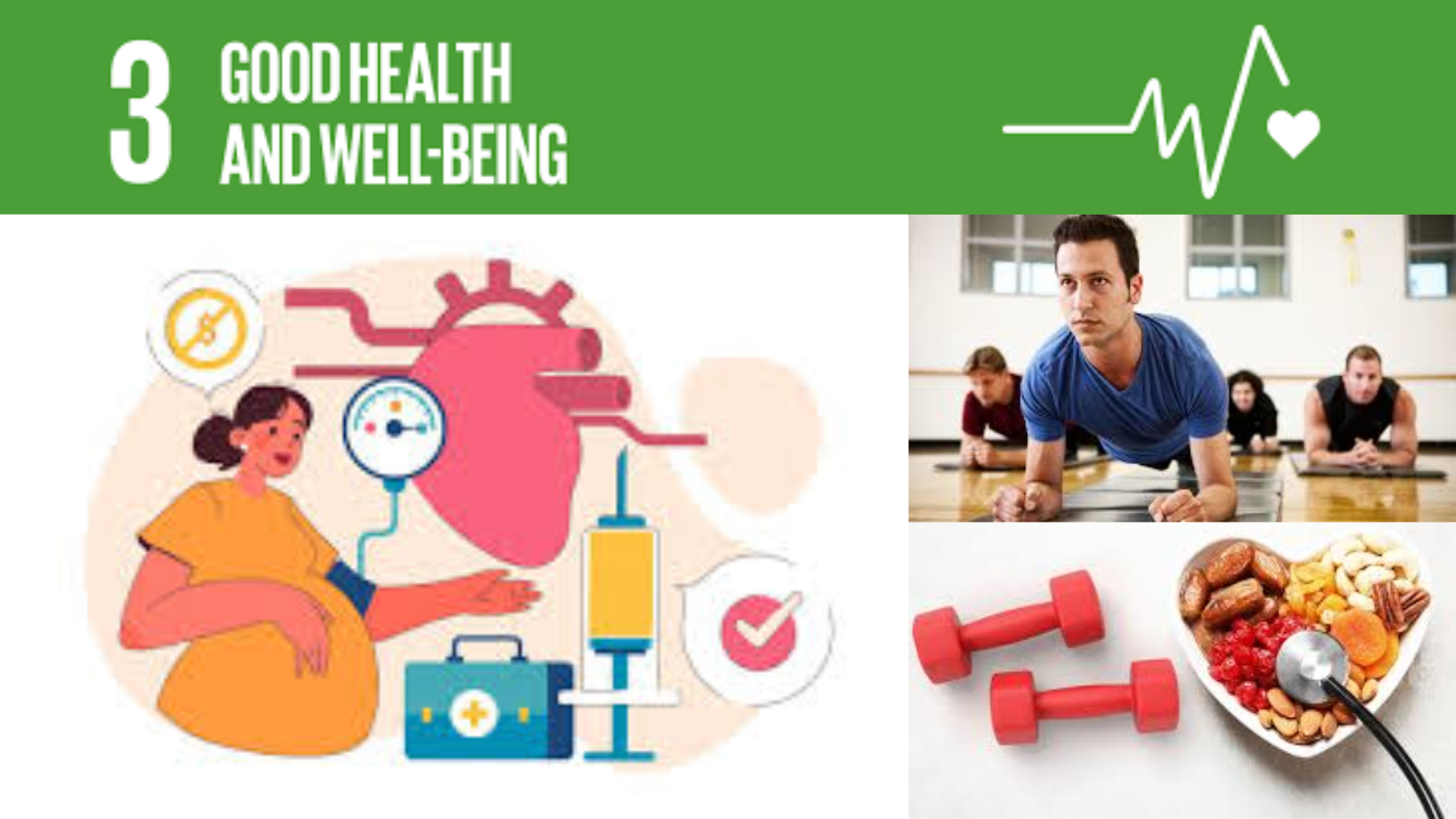🏥 SDG 3: Good Health and Well-Being
Goal:
Ensure healthy lives and promote well-being for all at all ages.
🌐 Why SDG 3 Matters
Health is a fundamental human right. Without good health, people cannot work, learn, or thrive. SDG 3 addresses the world’s most urgent health challenges, from maternal health and infectious diseases to mental health and road safety.
-
🌍 Despite progress, millions die every year from preventable causes like malaria, tuberculosis, HIV/AIDS, and poor maternal care.
-
👶 In 2020, 5 million children under age 5 died — many from preventable causes like pneumonia or diarrhea.
-
🤒 Noncommunicable diseases (NCDs) — like heart disease, diabetes, and cancer — cause over 70% of global deaths.
-
🧠 Mental health disorders affect 1 in 8 people worldwide, yet access to treatment remains low.
-
🚑 Road traffic injuries, substance abuse, poor air quality, and health emergencies (like COVID-19) continue to strain healthcare systems.
-
🩺 Universal health coverage and access to affordable, quality healthcare can save millions of lives.
🧭 Key Targets of SDG 3
| Target | Description | Target Year |
|---|---|---|
| 3.1 | Reduce global maternal mortality to less than 70 per 100,000 live births | 2030 |
| 3.2 | End preventable deaths of newborns and children under 5 | 2030 |
| 3.3 | End epidemics of AIDS, tuberculosis, malaria, and neglected tropical diseases | 2030 |
| 3.4 | Reduce premature mortality from noncommunicable diseases through prevention and treatment | 2030 |
| 3.5 | Strengthen prevention and treatment of substance abuse | Ongoing |
| 3.6 | Halve global deaths and injuries from road traffic accidents | 2030 |
| 3.7 | Ensure universal access to sexual and reproductive healthcare services | 2030 |
| 3.8 | Achieve universal health coverage (UHC), including financial risk protection | Ongoing |
| 3.9 | Reduce deaths from hazardous chemicals, air, water, and soil pollution | 2030 |
| 3.a | Strengthen implementation of the WHO Framework Convention on Tobacco Control | Ongoing |
| 3.b | Support R&D for vaccines and access to affordable medicines | Ongoing |
| 3.c | Increase health financing and the health workforce in developing countries | Ongoing |
| 3.d | Strengthen health systems and early warning for health risks and emergencies | Ongoing |
📊 Progress and Challenges
Progress:
-
💉 Immunization campaigns have saved millions from diseases like measles and polio.
-
🏥 Maternal and child mortality rates have declined significantly in many regions.
-
🚭 Increased awareness and control of tobacco and harmful substance use.
-
🧪 Growth in medical research, including vaccine development and disease diagnostics.
-
📢 Mental health awareness is rising, with more public discussions and support services emerging.
Challenges:
-
⚠️ COVID-19 disrupted health services, pushed healthcare systems to the brink, and reversed progress.
-
🌍 Health disparities between countries and communities remain stark.
-
🧬 Noncommunicable diseases and mental health issues are rising globally.
-
💰 Lack of affordable and accessible healthcare in many low-income and rural areas.
-
👩⚕️ Healthcare worker shortages, especially in developing countries.
-
💨 Pollution and climate change are increasingly contributing to poor health outcomes.
🧠 Who Is Involved?
-
Governments: Create and fund national health systems, policies, and insurance programs.
-
UN and Global Health Bodies: WHO, UNICEF, GAVI, UNAIDS, Global Fund support global health strategies and services.
-
NGOs and Community Health Workers: Deliver care in remote areas, advocate for public health, and provide emergency aid.
-
Hospitals and Medical Professionals: The frontline workers ensuring quality health services.
-
Researchers and Pharma: Develop vaccines, treatments, and innovative healthcare technologies.
-
You!: By living healthily, spreading awareness, and supporting health initiatives, individuals play a key role.
🌐 International Agreements Supporting SDG 3
-
WHO Framework Convention on Tobacco Control – A global treaty to reduce tobacco use.
-
Global Vaccine Action Plan – Coordinated action to improve access to vaccines.
-
Every Woman Every Child (EWEC) – A UN initiative to improve maternal, newborn, and child health.
-
International Health Regulations (2005) – Guide countries in public health emergencies.
🧩 How You Can Help
-
🩷 Prioritize your health – eat well, stay active, avoid harmful substances.
-
💊 Donate to health organizations like MSF (Doctors Without Borders), UNICEF, or the Red Cross.
-
💬 Talk about mental health – reduce stigma and support those struggling.
-
🧼 Practice hygiene and encourage others to do so — especially handwashing.
-
🧠 Learn first aid – you could save a life in an emergency.
-
🧴 Reduce pollution by using eco-friendly products and traveling sustainably.
-
🗳️ Support leaders and policies that strengthen public healthcare systems.

